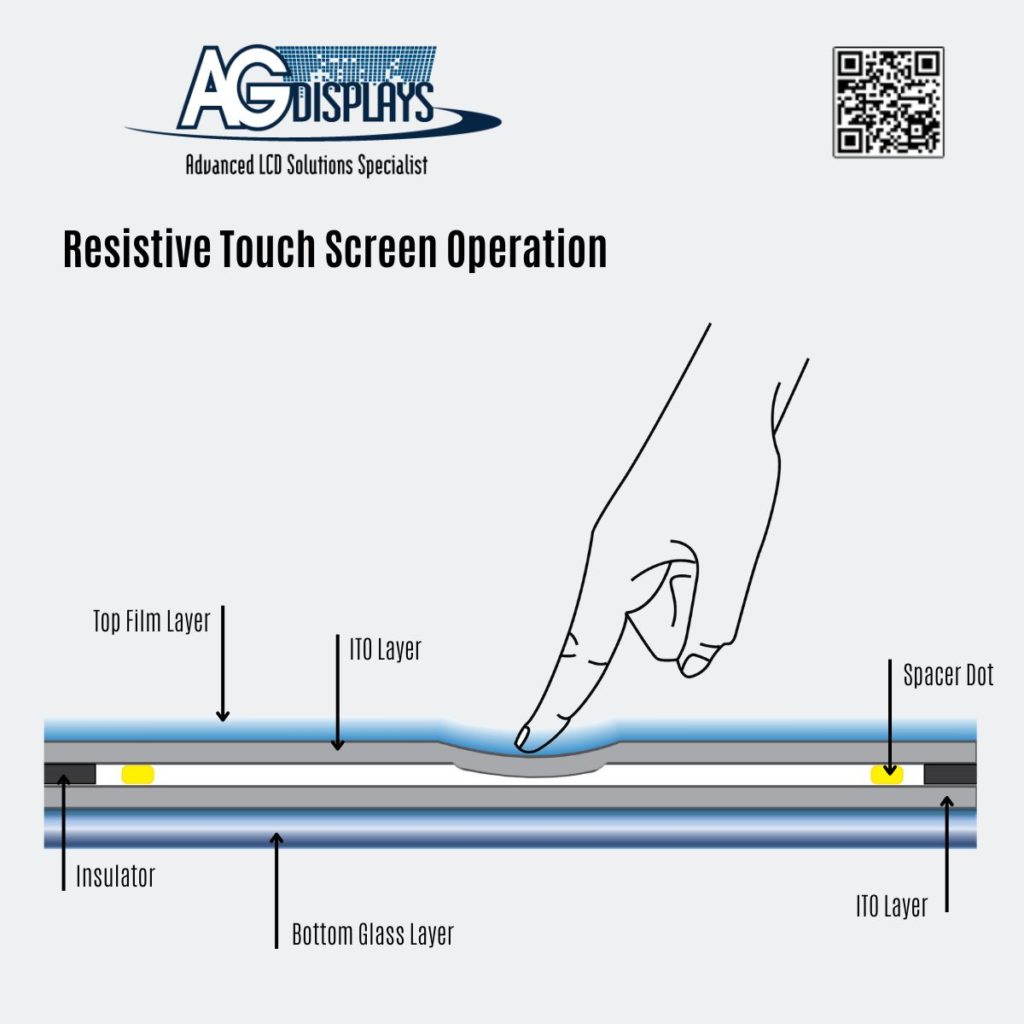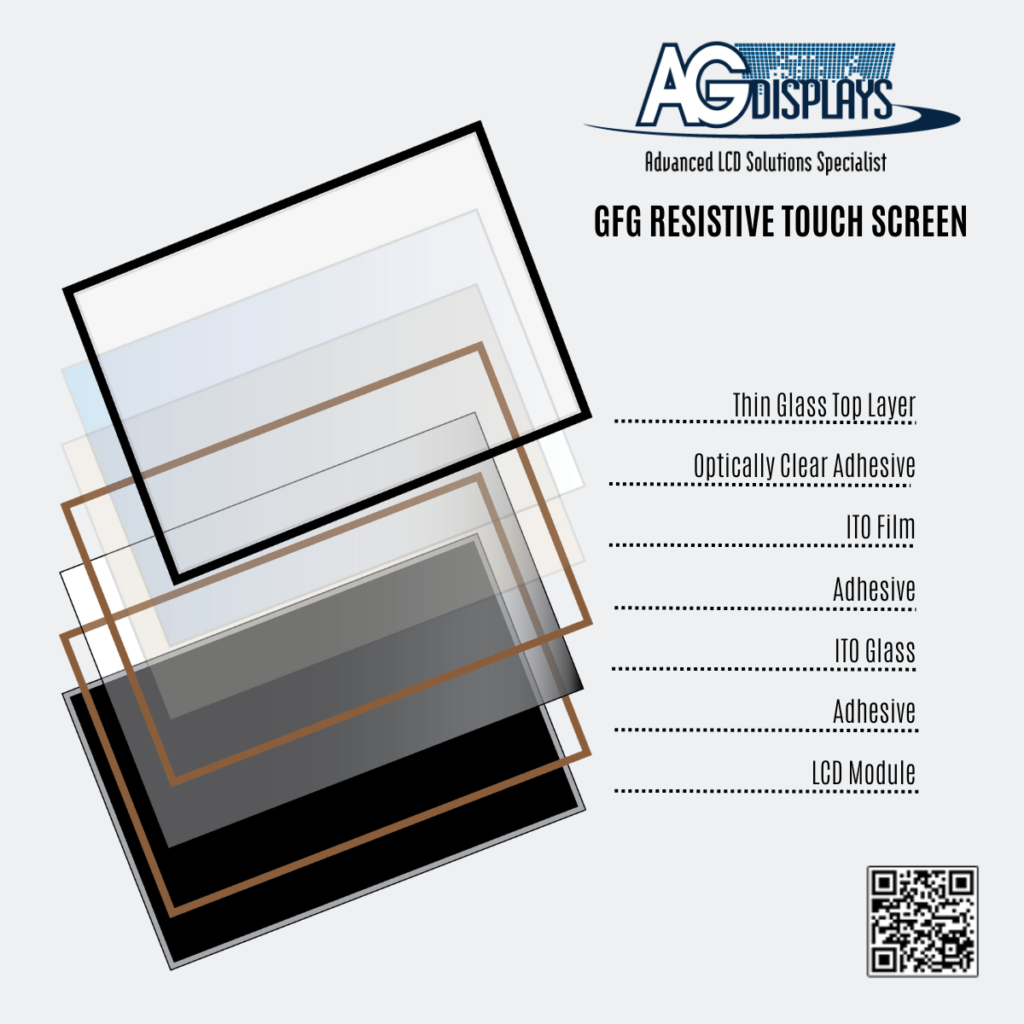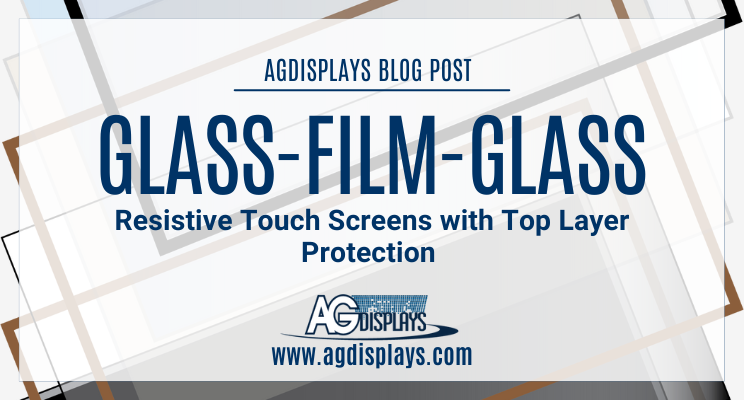How does a Resistive Touch Screen work?
A standard Resistive Touch Screen, that is one without the front glass application of a GFG Resistive, remains yet a simple and reliable form of touch screen technology. Resistive Touch Screens are touch screens that respond via the pressure applied to the display. To register and respond to this pressure, a Resistive Touch Screen is made from two conductive ITO coated layers that are separated by a small air gap. When pressure from a finger or stylus is applied to the front of the screen, the gap between the conductive layers is closed, and the position can then be read electronically by the display systems operating software. Resistive Touch Screens, by nature of their operation, are generally unaffected water and dirt, and have a relatively high noise immunity, which makes them perfect for harsh environments such as industrial machinery and outdoor applications. They can also be used with gloved and bare hands, stylus pens, and other tools designed to place the appropriate pressure onto the touch screen (such as a transparent rubber overlay).

What Makes a GFG Resistive Touch Screen Better?
A GFG or “Glass-Film-Glass” Resistive Touch Screen is a Resistive Touch Screen that has been enhanced with an additional layer of protective glass. Although a standard Resistive Touch Screen is not terribly affected by water or dirt, the top layer of the screen is still commonly made of a soft plastic overlay that is prone to scratches, heat, and other environmental hazards such as corrosive materials. By laminating a thin piece (.1-.2mm) of borosilicate glass to the top surface, the delicate top layer is protected from the elements, and is also easier to clean. By including an extra top layer of protective glass, a GFG Resistive Touch screen maintains the benefits of a Resistive Touch Screen, such as pressure-based touch response, gloved hand support, and lower production costs, along with adding benefits like increased temperature range and impact resistance, all while creating the look and feel of a PCAP Touch Screen.

Construction of a GFG Touch Screen
A GFG Resistive touch screen is a rather simple stack of glass and conductive materials that together creates a robust and reliable touch experience that rivals the crisp look and feel of a PCAP touch screen, all while remaining cost effective, and more suitable for a wide range of extreme conditions.
The top layer to a GFG Touch Screen is made of a .2mm uniform piece of hardened borosilicate glass. This layer is then optically bonded to the thin film or plastic layer that would typically be the exposed layer on a standard resistive touch screen. On the bottom of this film or plastic layer is the first coating of conductive material, which is an ITO (Indium-Tin-Oxide) layering which helps to create a uniform voltage across the screen. Next, below the layer of ITO coating, an important air gap is introduced by incorporating spacers that allows the adjacent layer to rest below, without touching the above ITO. This air gap is closed when pressure is applied by a user’s finger, and it is what allows the pressure response to be determined, by recording the position of the voltage change when the two layers separated by the air gap come into contact. To create the layer below the air gap, another coating of ITO is put in place, usually coated onto a piece of thin glass or polycarbonate. Finally this bottom layer is bonded to the LCD module, either via VHB perimeter bond, or by full optical or OCA bonding, creating the full touch screen display.


